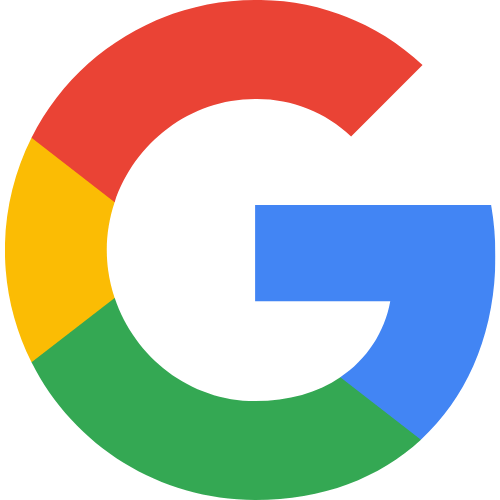Why are there so many dating apps?
Dating apps have become so popular in recent years as they allow people to make connections online, without the hassle of having to meet someone organically. They also allow us to find out more details about the people we’re interested in – that we might see as deal-breakers before we become too emotionally invested. However, some still enjoy a more organic connection that can only be gained by meeting someone in real life.
If people can connect and form friendships with others through social media apps and platforms like Twitter, Instagram, Facebook, TikTok and more, why shouldn’t we use apps and platforms for finding our love interests?
With most of the typical places single people would go to meet someone now closed due to coronavirus restrictions, a lot of the public are unable to find their new significant other. Of course, dating apps are the natural alternative to this.
It feels like a new dating app emerges onto the market every other week, so much so that it makes you wonder how there is still space in this crowded market. Essentially, for every personality trait or aspect of your personal identity, there is a dating app that will help you find someone that’s either similar to you or appreciates your specific personality and the traits that make you who you are.
In honour of Valentine’s Day on the 14th, we’ve decided to run through some of the world’s top dating apps, exploring their key features and functions as well as how these appeal to their target audiences.
Read on to learn more.
Types of Dating Apps and Their Target Markets
The types of dating apps we will analyse include:
- LGBTQ+ Dating Apps
- Religious Dating Apps
- Casual Dating Apps
- Dating Apps for Relationships
- Elite Dating Apps
- Fetish Dating Apps
- Race Specific Dating Apps
LGBTQ+ Dating Apps
Whilst apps like Tinder, Bumble and others have options for LGBTQ+ users, many prefer to use apps designed specifically for LGBTQ+ people.
Who are the users of LGBTQ+ dating apps?
Generally speaking, users of sexuality-specific dating apps tend to be aged 18-24 and are looking to meet new friends or love interests relatively quickly, willing to search for up to two weeks. Whilst apps like Tinder, Bumble and others have options for LGBTQ+ users, many prefer to use specialist apps like Grindr and HER.
What are the needs of users of LGBTQ+ dating apps?
The needs of users of LGBTQ+ dating apps are similar to those of other more mainstream apps as well as the need for features that allow users to fully express their identities and be actively involved with the app community.
How do the common features appeal to the target audience?
Commonly found features that appeal to the target audience include lots of options for personalisation that reflect users’ identities, easily navigable interface and strong community guidelines.
HER
HER claims to be the most popular free dating platform for LGBTQ+ women and non-binary people with six million users worldwide and a 4.4-star rating on the App Store.
Not only does it allow people in the community to find partners using a Tinder-like swipe feature, HER hosts regular parties and events in fifteen cities across the globe such as speed-dating and cocktail making classes.
The app is monitored by volunteer moderators who give up their free time to ensure the app remains a safe and healthy environment for all. Users can also quickly access a list of charities and organisations that offer support for issues relating specifically to LGBTQ+ women and non-binary people.
Grindr
Since its launch in 2009 Grindr has remained the most popular app for gay people in the world, with recent statistics showing the app has a total of nearly 30 million members worldwide (SCMP).
The app is widely regarded as a hookup app and has always had trouble trying to shake this image because of its location-based matching feature allowing users to quickly meet those in a close location to them.
Users can scroll through lists of profiles in order of proximity, message, share images and agree to meet in real life.
Religious Dating Apps
Who are the users of religious dating apps?
Users of religion-based dating apps are typically people who aren’t comfortable with dating outside of their religion or are tired of explaining their faith to others and want to be understood from day one(or in this case, message one).
What are the needs of users of religious dating apps?
Those of us with a strong religious faith might benefit from meeting someone who just understands your commitment to your religion straight away. It can be time-consuming and draining to be constantly educating others on the ins and outs of your faith but by finding your next partner on a religion-specific dating app, you can bypass that entire process and find someone who just gets it.
How do the common features of religious dating apps appeal to the target audience?
Dating apps that focus on religion appeal to their target audience by including extra filters to focus their range to reflect users like them. Whilst other apps use a quantity over quality approach, religious dating apps try to do the opposite by providing users with a smaller selection of potential love interests that more accurately match the kind of person they’re looking for. Differences in belief and religion are one of the top reasons for divorce and separation so these types of apps can help contribute to longer partnerships.
Christian Mingle
Christian Mingle is an online dating website and app which aims to connect single Christians by sending users targeted match suggestions to browse through, like and save.
Through the setup process, app users can choose from a variety of different options that describe themselves and the kind of partner they’re looking for such as whether they want marriage, kids or which of the 23 denominations supported by the app they belong to.
Users can also sort matches by how long they’ve been using the app, how far away they are located and match percentage.
SALT
The SALT dating app user interface models that of the well-known dating app Tinder, allowing users to click a heart on the right side of their screen if they’re interested or to click a skip arrow if they’re not.
Focusing on the U.K market, SALT’s user base is Christians who are looking for a low-pressure way to meet, date and marry other Christians in their area.
Muzmatch
Muzmatch is a widely used global matchmaking app for Muslims wanting to find dates or marriage. The app claims to so far be responsible for over 100,000 Muslim weddings across the world.
This app differs from others on the market as it allows users to keep their photos hidden and adopt a nickname to stay discreet and remain anonymous to close friends and family members.
Other personalisation features include the option for users to outline their dress preference, sect, ethnicity, religiosity, how much they pray and more.
To reduce spam accounts and prevent catfishing, all profiles created require you to upload a selfie (kept private from other users) that can be used to manually verify the validity of your profile along with text message confirmation and GPS location-based checks.
Further than this, users can include a chaperone (Wali) in their conversations with other users for added safety. Members can also give positive feedback based on the standard of their conversations with other users, giving them the option to earn badges for their profiles.
Casual Dating Apps
Whilst we have labelled the following as apps for people looking for something on the more casual side of things, there’s nothing to say they can’t be used to find a lasting relationship.
Who are the users of casual dating apps?
Casual dating apps mostly appeal to people who are short on time but are still interested in connecting with someone new. Typical users of this type of app are aged between 18 and 25 and prefer to spend around 1-5 days looking for someone new. These people tend to be free-spirited, relaxed and open-minded.
What are the needs of users of casual dating apps?
Users of this kind of dating app need something that’s easy to use and doesn’t require too much effort or time to operate.
How do the common features of casual dating apps appeal to the target audience?
Swipe yes/no features are common in apps like this as they make it easy for users to make quick choices based on limited information.
Additionally, the UX of apps such as these is often very simple so that users don’t have to take too long to figure out how to navigate them.
Casual connections are more likely to be based on appearances rather than the content of the person of interest’s character which is why often on these apps, the appearance of users is presented most prominently – followed by their other personal characteristics and interests.
Tinder
Tinder is the originator of the swipe left/right feature we see on most of the popular dating apps today, making its UI design instantly recognisable.
Mostly regarded as a hookup app, Tinder allows users to swipe through other users in their area, basing their decisions on the other person’s appearance, age, proximity and a short bio or description.
In the U.K, the highest proportion of Tinder users are aged 25-34 and live in urban areas (Bedbible).
Bumble
Bumble is kind of an all-in-one platform where users can find relationships, make friends and engage in career networking all from Bumble Date, Bumble BFF and Bumble Bizz.
In terms of dating, the Bumble Date app attempts to switch up outdated dating dynamics by only letting the woman message first in heterosexual matches (in same-sex matches, either party can message first).
If no message is sent within 24 hours of matching, the couple is unmatched and miss out on making a connection after this point.
The app allows up to six photos to be uploaded to profiles, as well as a short bio, job, education and gender. Users also have the option to connect their Spotify and Instagram accounts to their profile, giving their matches a more well-rounded view of them and to serve as potential conversation starters.
Though the app is based in London, it’s available for download worldwide and saw a 25% usage increase during the height of the Covid-19 pandemic. (Mother Jones)
Bumble still falls under our category of casual dating apps but does make some effort to encourage deeper, less superficial connections and conversations than some of the other similar apps on the market today.
Reaching 100 million users last year, the app can be identified as a tangible threat to Tinder’s under 35 market (Tech Crunch).
Hinge
Hinge pitches itself to new users as the dating app that’s ‘designed to be deleted’, aiming to give its users better matches, better conversations, ultimately leading to better dates and no further reason to use the app.
This app offers its members more profile customisation features than others in the market such as religion, height and political standpoint. This is great for avoiding matching with people who strongly oppose your views or don’t align with your ideal date.
When setting up a profile, Hinge members can choose three pre-set questions to answer about themselves and add to their profile. Some examples of the questions and prompts you can choose from include:
- A shower thought I recently had…
- Worst first date…
- Dating me is like…
- I’ll know I’ve found the one when…
- Typical Sunday…
These questions allow users to build a more well-rounded profile, giving the potential for connection on a more personal level.
Hinge shows users a small, select list of potential matches based on calculations by a sophisticated algorithm as opposed to Tinder’s constant stream of profiles.
With a 4.4 star rating (made up of 67.3k ratings) on the App Store and 3 out of 4 users wanting to go on a second date with their match, the app is fast growing in popularity.
Kippo
Kippo is the dating app designed for gamers to meet other like-minded singles. Although it’s unfortunately not available in the U.K, we predict the app will either expand into the U.K market with time or Britain’s diverse tech scene will develop an equivalent.
Visually Kippo appeals to its target market with a sleek, futuristic colour scheme and feel, tastefully avoiding looking gaudy or cringeworthy. Users have the option to choose from a variety of cards to add to their profiles, giving information on their console collection or love languages as examples. These details are then fed into various compatibility algorithms.
The app offers greater control to its members than some other apps on the market, with the options to identify yourself as nonbinary, open your dating pool to everyone, display whether you’re just looking for new friends or close your inbox to avoid unwanted messages.
Boundaries are important in dating, whether online or in-person and it’s great to see apps like these encouraging this.
Dating Apps for Relationships
Who are the users of dating apps for relationships?
Most of the people using dating apps to find lasting relationships are in the 26-45 age range and are prepared to spend more time (3-6 months) searching for ‘The One’ than users of casual dating apps. Typically, these users tend to be interested in having fun, travelling and indulging in home comforts.
What are the needs of users of dating apps meant for building relationships?
Users of these apps need an intuitive app without time-pressured decision making.
How do the common features of dating apps for relationships appeal to the target audience?
Apps that balance personal characteristics with appearance or even prioritise personality tend to appeal better to users looking for longer relationships. Therefore members require greater profile personalisation features and a UX that doesn’t push them into making quick matches based on limited data.
eHarmony
When setting up an eharmony profile, users have to complete a 20-minute compatibility quiz, the results of which are used to create a ‘personality profile’ detailing their character, lifestyle, relationship behaviour and communication style.
eHarmony then uses this personality profile to match users with others who are deemed to be compatible based on their similarities and complementary differences. The app also has a secure video date functionality so members can chat without leaving the app or having to meet in person at a time where non-essential travel isn’t encouraged.
Match
Match positions itself as an alternative to casual dating apps, attracting users who are looking for a more substantial connection. Users can search for potential love interests by the criteria listed on their profile pages.
The app promotes safety and visibility by moderating all profile pictures and descriptions. Single men on the app can even apply to receive a badge on their profile that shows other users that they are ready to commit.
Match says “The Match Badge is the ultimate recognition for respectful gents – singles who are ready to show the best behaviours with women!”
Plenty of Fish
First launching online in 2003, the platform has adapted to modern times with an iOS and Android app but still appeals largely to an older audience looking for longer-lasting connections.
Plenty of Fish (or POF) prioritises messaging – urging users to get chatting with people as much as possible. Members can browse profiles using filters such as age, intent, ethnicity, length of longest relationship and body type to start a conversation with just about anyone, eliminating the ‘match’ phase which is commonly found in other dating apps.
The only limitations on messaging are 55 new people and the age gap between the two must be less than 14 years or nine years for 21-year-olds and below.
To compensate for the inability of many to meet up in-person due to Covid-19 restrictions POF allows users to host and watch live-streams, opening the door to stronger community relations, streaming games and dating advice lectures.
Though it is worth noting that the app lacks the capability for users to link third-party apps such as Spotify or Instagram, it could be argued that dating apps which boast fewer features are easier to use and simpler to navigate.
Elite Dating Apps
Who are the users of elite dating apps?
Elite dating app users tend to have well-established careers allowing them to earn more pay, facilitating a certain high-end lifestyle.
What are the needs of users using elite dating apps?
Users of apps like these tend to need more control over the types of matches that are displayed to them as well as preferring a more premium looking interface design.
The apps also need to be quick and easy to use so they can be used on-the-go without interrupting users’ busy schedules.
How do the common features of elite dating apps appeal to the target audience?
Commonly found features that appeal to elite dating app users include:
- Enhanced verification methods to prevent fraud, catfishing and cybercrime
- Detailed personality analysis
- Simple navigation
- Not feature-light
Elite Singles
Elite Singles is a dating app targeted at single, busy professionals between 33 and 50 years old who are looking for a new love interest. New users must first complete a personality test based on the Five-Factor Model of Personality as well as providing information on their age, gender, occupation and location.
Also referred to as the ‘Big Five’, the five factors in the model include:
- Openness to experience
- Conscientiousness
- Extraversion
- Agreeableness
- Neuroticism
The app uses the personality scores to match users with between three and seven compatible others each day. You can then browse through the profiles of your matches to send them a message or save their profile for later if you’re not quite ready to make contact. When the test is complete and submitted, users do not have the option to go back and change their answers so the answers must be filled in correctly the first time.
The fact that users don’t have to spend hours and hours of the day scrolling through hundreds of potential matches is perfect for those with a busy work life – Elite Singles could arguably be defined as more of a matchmaking service than a dating app.
Luxy
Luxy promotes itself as the ‘#1 millionaire’s matchmaking and dating club’ and is designed specifically for singles earning six figures or more. When signing up users have to verify their profiles by uploading a picture of their ID as well as their most recent tax return.
This app is super exclusive and for that reason takes a quality over quantity approach to providing matches, the complete opposite to apps like Tinder which flood users with potential connections.
The app offers both free and paid memberships but the paid features are severely limited, for example, free members can only swipe through 30 people per day (broken up into three rounds of 10 swipes) and can’t initiate conversations with other users, they can only respond to messages sent by premium members.
Another downside to this app is that it’s not great for people who live in rural areas as most of its target market tend to be located in larger cities and metropolitan areas.
Fetish Dating Apps
Who are the users of fetish dating apps?
Fetish dating apps are popular amongst people who are into something really specific in the bedroom and are only looking to engage with people who have the same sexual interests as them. Typically they’re aged between 23-29 and are willing to spend anywhere up to a month searching for a short term fling or longer sexual arrangement. Fetish dating app users tend to be described as adventurous, open-minded, unique and relaxed.
What are the needs of users for fetish dating apps?
Fetish dating app users need to be able to search and sort through vast amounts of user-profiles to easily find their perfect companion. They also need to be able to display their own interests clearly on their profiles. Because of the nature of conversation on these apps, users might also need to be able to set boundaries and limits and benefit from enhanced safety features to prevent harassment or unwanted behaviour.
How do the common features of fetish dating apps appeal to the target audience?
Apps that fall into this category tend to offer their users enhanced safety and security features as well as the ability to customise their profiles to a high degree.
KinkD
KinkD aims to create a safe dating community for people with various kinks and fetishes. Essentially it’s a Tinder-style app for fetish enthusiasts and uses the same swipe left/right UI. Users do have a limited number of swipes per day but can unlock more with a £12 premium subscription.
Safety measures on the app include:
- Allowing users to mark photos they’ve uploaded as not to be shown privately until requests from other users to view them are approved
- Photo verification
- ID-based profile verification reviewed by real humans
More recently, the app has begun utilising AI image recognition technology to prevent users from sending explicit images using its chat feature. This move comes after a user survey revealed that almost 90% of the respondents had at some point in their lives received an unwanted explicitly sexual picture as well as changes to U.S law designed to criminalise unsolicited sexual images.
Whiplr
Whiplr is a location-based fetish dating and chats app with over 230 different fetish categories for users to browse through. Not only can users send and delete messages, voice call and share photos, there’s also the option to video chat.
Whiplr users can also take part in group discussion and virtual events via the app to get more involved with the fetish community.
To keep the app as a safe space for all, users can choose what parts of their profiles are visible to others and can permanently block people who make them uncomfortable or violate certain boundaries.
Feeld
Feeld is the dating app for couples and singles looking to explore different sexual avenues, users can even create couples profiles. All in-app activity is kept completely private from Facebook (which is used for profile setup and verification) giving users anonymity amongst friends and allows users to select from a list of over 20 sexualities.
The app’s most unique feature is group chats allowing multiple parties to communicate with each other through a single channel. This appeals to the target audience, who might be interested in entertaining more than one person at a time.
Race-Specific Dating Apps
Who are the users of race-specific dating apps?
Users on race-specific dating apps tend to be looking for a meaningful connection with someone of the same racial background as them. Typically aged between 18 and 29, the average user of an app in this category is interested in having fun, travelling and cultural experiences and is happy to search for up to six months to find a long term relationship.
What are the needs of users who utilise race-specific dating apps?
Race-specific dating app user needs tend to desire a respectful, accepting community feel without having to experience the targeted abuse or racial bias commonly found on other dating apps like Tinder.
How do the common features of race-specific dating apps appeal to the target audience?
Sophisticated search features, strong community guidelines and advanced algorithmic matching are just some of the features that appeal to the target audience of these apps.
Black Gentry
Black Gentry is a dating app that claims to be for ‘high achieving Black single men and Black single women’. Users can swipe or search by feature for black single people they’d be interested in.
All profiles are verified so that the app isn’t flooded with fake profiles and users can either find matches in their area or an area they’re visiting soon.
Dil Mil
Dil Mil is an app for single South Asians to meet and chat. Users can personalise their profiles and search settings with several different categories, including:
- Age
- Height
- Religion
- Gender
- Location
- Community (Bengali, Rajasthani etc.)
- Career
- Education
- Where they were raised
Advanced matching algorithms are used to present profiles for users to swipe yes or no on to find a match, similar to Tinder.
With over two million users in the U.K, U.S, Australia and Canada, the app claims responsibility for one new relationship per hour and one marriage per day.
What UI/UX features do these apps have in common?
Swipe left or right?
Tinder’s swipe left, or right function is viral and is a commonly used function in most dating apps now, including the ones mentioned above. Tinder is often found at the top of the list of examples of good UX and gamification because of this very feature.
The reason it works so well is that the app does not inform users of whether someone has swiped left or right on their profile, meaning no one has to battle with the fear of rejection or the guilt that comes with rejecting someone else.
Main U“X” Purpose
Pretty much all of the apps display a very clear and prominent red ‘X’ button and a green tick button along with a user’s image on the landing page, showing the main UX process of these apps is to go straight into judging their basic profile information (age, location, etc.) and pictures to decide whether they’re your cup of tea or not.
Pay to Date
Most apps are initially free for users to download and operate the basic features but often offer a paid option with access to premium features such as an unlimited amount of daily swipes on Tinder.
Video Chat
A lot of people are still sceptical about using dating apps because of the fear of being catfished, after all just about anyone can create a profile on one of these apps without ever having to confirm that they are who they say they are.
To combat this lack of trust, some apps are introducing new video chat features so that users can video chat with the person they’re interacting with without having to leave the app.
This is smart addition by the app developers because it means users have one less reason to leave your app and go to another and also helps in reinforcing personal boundaries for users who aren’t comfortable with sharing other personal information like phone numbers or email addresses that they’d need to give out to be contacted on other video chat services.
Girls First
To mix things up a bit, some apps actively encourage women to make the first move instead of the men. For example, the Bumble UX does not allow men to message first when they match with a woman and speed things up a little, the woman only has 24 hours to send the all-important first message or the match will disappear.
What do we think could be improved about dating apps?
Better User Authentication
More needs to be done by dating app providers to ensure the authenticity and transparency of the profiles on their apps.
We would like to see more dating apps utilise omnichannel identity verification technology to rid their services of scammers, criminals and predators. This would be a huge step in improving the security and safety of all their users, including those who can be identified as vulnerable.
Challenging Stigma
For too long, dating apps had the reputation of being hotbeds for creeps, weirdos and sex pests but largely this is not the case. Modern dating sites and websites are mostly populated by normal people trying to meet normal people.
Another step we feel dating app brands should be taking is the active challenging of the stigmas surrounding the use of dating apps.
For this reason, we feel dating app brands should be taking a more active role in challenging the stigma surrounding the use of dating apps.
Not only would this eventually lead to the expansion of their consumer base but it would also somewhat improve the overall experience of their users.
Improved Profile Personalisation Options
At the moment most of the categories or options available on dating apps to narrow down your selection of potential connections are fairly limited, apart from the more niche apps that need to appeal to a more specific audience.
We’d like to see increased customisation features on the more mainstream apps too.























